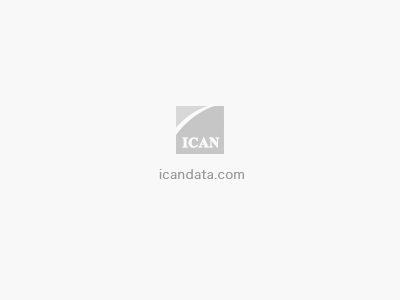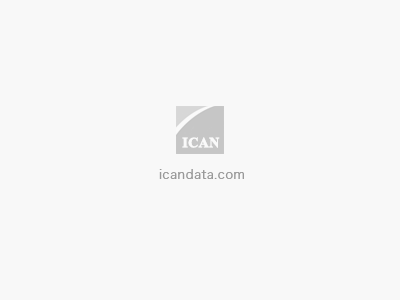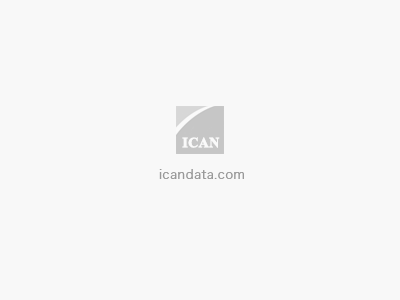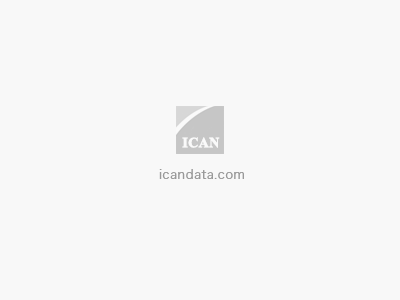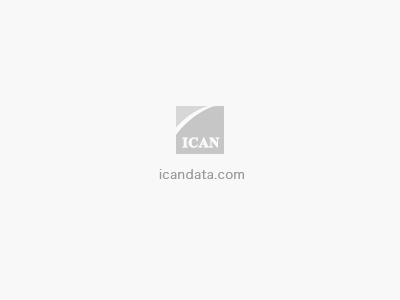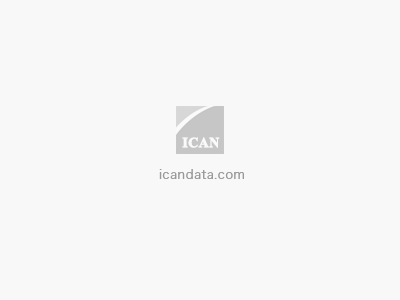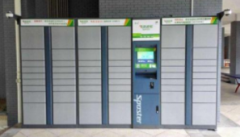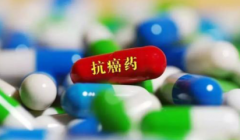数据来源与研究方法:
- 对行业内相关的专家、厂商、渠道商、业务(销售)人员及客户进行访谈,获取最新的一手市场资料;
- 艾凯咨询集团对长期监测采集的数据资料;
- 行业协会、国家统计局、海关总署、国家发改委、工商总局等政府部门和官方机构的数据与资料;
- 行业公开信息;
- 行业企业及上、下游企业的季报、年报和其它公开信息;
- 各类中英文期刊数据库、图书馆、科研院所、高等院校的文献资料;
- 行业资深专家公开发表的观点;
- 对行业的重要数据指标进行连续性对比,反映行业发展趋势;
- 通过专家咨询、小组讨论、桌面研究等方法对核心数据和观点进行反复论证。
报告简介:
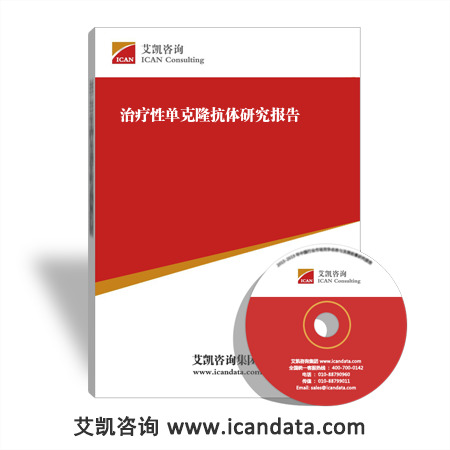 摘要
摘要
hinner pipelines than before and pressure from an ever-aggressive generics industry, the segment of monoclonal antibodies therapeutics is thriving and growing at a double-digit rate. Therapeutic Monoclonal Antibodies 2008-2023 shows how monoclonal antibodies are a leading product of biotechnology, being increasingly used in therapy. Currently, monoclonal antibodies are playing an important role in the treatment of cancer, autoimmune and inflammatory disorders. Therapeutic monoclonal antibodies boast one of the most active and promising pipelines in the pharmaceutical industry.
Ten years ago, there were only two monoclonal antibody drugs on the world market, now there are 21 FDA approved therapies - including eight blockbuster drugs. In 2007, the market was worth $21.9bn, but what will it be in 5 years time? This report will tell you and tell you today. Visiongain believes that some of the greatest opportunities ever available for biopharmaceutical companies are now there to be seized, with important sales, licensing agreements and collaborative partnerships from the present onwards in monoclonal antibodies and other biologicals.
Our new Therapeutic Monoclonal Antibodies 2008-2023 report examines the market for monoclonal antibodies critically, through comprehensive primary and secondary research. In addition to consultation with experts in industry - including full interview transcripts - this research involved a detailed study of relevant documents, industrial reports and current developments. Visiongain discusses the monoclonal antibody market in the context of the biotechnological platforms and therapeutic areas. Importantly, visiongain applied techniques such as financial forecasting and analysis of drivers and restraints. The result is a comprehensive market-based report with detailed analyses and informed opinion.
In particular, Therapeutic Monoclonal Antibodies 2008-2023 concentrates on the following essential aspects of the monoclonal antibodies sector:
* Technologies that drive the MAb sector
* Therapy areas that drive the MAb sector
* Sales forecasts of the global therapeutic MAb market from 2008-2023 - including those of principal market segments, both by disease area and technology
* Sales forecasts for leading products worldwide in this sector
* Sales forecasts for therapeutic MAb sales in leading national markets, including China and India
* Key industrial players in the therapeutic monoclonal antibody sector - both established and emerging - including partnerships
* Drivers and opportunities in the MAb sector
* Restraints and threats in the MAb sector
* Assessments of relevant business models, technological solutions and associated issues
* Coverage of future trends in MAbs, especially pipeline developments
* Insight from interviews with relevant experts Why you should buy this report:
* To receive a comprehensive analysis of the prospects for the therapeutic monoclonal antibodies industry from 2008-2023, including sales forecasts, major growth areas and pipeline products
* To discover predicted revenues, growth rates and other key metrics in the therapeutic monoclonal antibodies market from 2008-2023, especially for leading brands
* To determine the forces that influence the therapeutic monoclonal antibodies market:
* Drivers and restraints on market
* Competition
* Strengths, weaknesses, opportunities and threats.
* To find out where the therapeutic monoclonal antibodies market is heading from 2008 onwards - both technologically and commercially
目录及图表
1 Executive Summary
1.1 Aims of This Report
1.2 A Brief Overview of the Chapters
2 Introduction
2.1 What is a Monoclonal Antibody?
2.1.1 Structure of Antibodies
2.1.2 Function of Antibodies
2.2 History of Therapeutic Monoclonal Antibody Development
2.2.1 Different Types of Therapeutic Antibody
2.2.2 Timeline for Monoclonal Antibodies in Therapy
2.3 There are 21 FDA Approved Therapeutic Monoclonals
2.4 Monoclonal Antibodies are a Thriving Part of the Biotech Market
2.4.1 MAbs Lead the Market
2.5 The Monoclonal Antibody Market is Taking Off
3 World Market for Therapeutic Monoclonal Antibodies
3.1 Summary of Key Findings
3.2 Therapeutic Monoclonal Antibodies Generated Over $21bn in 2007
3.3 World Therapeutic Monoclonal Antibodies Market Forecast 2008-2023
3.4 Market Analysis of the Leading Products - the 'Big 5'
3.4.1 Remicade is Leading the Pack, but Will it Last?
3.5 Market Forecast by Therapeutic Analysis
3.5.1 Oncology Drugs Dominate in the Monoclonal Antibody Market
3.5.1.1 Over Half of Monoclonal Antibody Revenues are from Oncology Products
3.5.1.2 Cancer Drugs will Drive the Market
3.5.2 AIID is Second in Line
3.5.2.1 AIID Narrows the Gap
3.5.3 Other Therapeutic Areas are also Growing Quickly
3.5.3.1 Other Therapeutic Areas Represent 10% of the Market
3.6 Market Forecast by Technology Analysis
3.6.1 Chimeric Antibodies Retiring from the Spotlight
3.6.2 Humanised Antibodies Moving to Centre Stage
3.6.3 Fully Human Antibodies Set to Become the Next Star
3.6.4 A Change of Guard in Technology Forerunners
4 Forces Affecting the Therapeutic Monoclonal Antibodies Market
4.1 SWOT Analysis of the Therapeutic Monoclonal Antibodies Market
4.2 Monoclonal Drugs Constitute a Thriving Market
4.2.1 Monoclonal Technology Allows a Wide Range of Targets
4.2.2 Cancer Drugs Lead the Monoclonal Market
4.2.3 Chronic and Niche Diseases Generate High Revenues
4.2.4 There is a Lower Risk of Adverse Events for Monoclonals
4.2.5 Monoclonal Antibodies Avoid Biogeneric Competition
4.2.6 Rising Expenditures of Prescription Drugs Stimulate Market Growth
4.3 Pipeline Developments in Monoclonal Antibody Therapies are Very Promising
4.3.1 New Production Methods Will Reduce Costs
4.3.2 Flexible Formats to Fill Unmet Needs in Oncology
4.3.3 Innovative Combination Uses of Existing Products
4.4 Weaknesses and Threats Will Hold Back the Monoclonal Market to Some Degree
4.4.1 Big and Expensive: Developmental Costs Limit Growth
4.4.2 Injections are the Main Mode of Administration
4.4.3 The Challenge of Immunogenicity Looms Large
4.4.4 High Profile Safety Cases Increase Regulatory Concerns
4.4.5 Competition is Fierce for Many Prime Targets
5 Leading Marketed and Pipeline Products for Therapeutic Monoclonal Antibodies
5.1 The 'Big 5' Will Continue to Dominate the Market
5.1.1 Remicade (Johnson and Johnson)
5.1.1.1 Doubts Linger Around Remicade
5.1.2 Rituxan/MabThera (Roche/Genentech)
5.1.2.1 Rituxan Grows to $6.4bn by 2013
5.1.3 Herceptin (Roche/Genentech)
5.1.3.1 Herceptin Faces Tough Competition
5.1.4 Avastin (Roche/Genentech)
5.1.4.1 Avastin to Drive the Growth and Innovation of Therapeutic Antibodies
5.1.5 Humira (Abbott)
5.1.5.1 Humira Has Immense Opportunities
5.2 Market Analysis of the Emerging Products - The Three Other Blockbusters
5.2.1 Erbitux (Merck/ImClone)
5.2.1.1 Erbitux Does Not Have Enough to Overtake Avastin
5.2.2 Lucentis (Roche/Genentech)
5.2.2.1 Growth Flattens for Lucentis
5.2.3 Synagis (AstraZeneca)
5.2.3.1 Pessimism Surrounds Synagis
5.3 Top Seven Products to Watch
5.3.1 Cimzia (UCB)
5.3.2 Golimumab (Johnson and Johnson)
5.3.3 Denosumab (Amgen)
5.3.4 Numax (AstraZeneca/MedImmune/Applied Molecular Evolution)
5.3.5 Bapineuzumab (Elan/Wyeth)
5.3.6 ABT-874 (Abbott)
5.3.7 Ustekinumab (Johnson and Johnson)
6 Therapeutic Monoclonal Antibodies Market Dynamics
6.1 Therapeutic Monoclonal Antibodies Market Finds Success Outside of the Traditional
Blockbuster Model
6.2 Therapeutic Monoclonal Antibodies - a High-Value Market with a High Barrier of
Entry
6.3 Big Pharma is Moving into the Market
6.4 Strategic Alliances Help to Accelerate Market Growth
6.5 Roche and Genentech's Partnership Follows a Winning Business Blueprint
6.6 A Market Monopolised by Three Giants
6.6.1 Roche/Genentech Has Absolute Control in the Market
6.6.1.1 Marketed Monoclonal Antibody Therapies
6.6.1.2 Pipeline Analysis
6.6.1.3 Strategic Analysis
6.6.2 Johnson and Johnson Looking to Secure Leadership in Autoimmune Antibodies
6.6.2.1 Marketed Monoclonal Antibody Therapies
6.6.2.2 Pipeline Analysis
6.6.2.3 Strategic Analysis
6.6.3 Abbott Ties its Future to Humira
6.6.3.1 Marketed Monoclonal Antibody Therapies
6.6.3.2 Pipeline Analysis
6.6.3.3 Strategic Analysis
6.7 Emerging Player to Watch
6.7.1 Amgen Bets on Bone Diseases
6.7.1.1 Marketed Monoclonal Antibodies Therapies
6.7.1.2 Pipeline Analysis
6.7.1.3 Strategic Analysis
7 Therapeutic Monoclonal Antibodies in the Leading Pharmaceutical Markets
7.1 Sales of Therapeutic Monoclonal Antibodies in the US
7.1.1 Increasing Prevalence of Cancer Will Drive Sales in the US Market
7.1.2 High Economic Cost of Cancer and Autoimmune Diseases Will Drive Sales of
Monoclonal Antibodies
7.2 The European Market for Monoclonal Antibodies Will Increase Moderately
7.3 Developing Countries are Thriving
7.4 China and India Rise Up
8 Interviews with Industry Experts: Therapeutic Monoclonal Antibodies - Current and Future Trends
8.1 Interview 1: Professor Joe Cummins, Professor Emeritus of Genetics, University of
Western Ontario, Canada.
8.1.1 Safety Concerns for Therapeutic Monoclonal Antibodies
8.1.2 Excitement Surrounding Therapeutic Monoclonal Antibodies
8.1.3 Prospects of Fully Human Antibodies
8.1.4 Prospects of the Therapeutic Monoclonal Antibodies Market
8.2 Interview 2: Dr Martin Wiles, Vice President of Business Development,
BioInvent, Sweden
8.2.1 Greatest Obstacles to Market Growth
8.2.2 Prospects of Fully Human Antibodies
8.2.3 Prospects of Therapeutic Monoclonal Antibodies Market
8.2.4 Most Promising Products
8.2.5 Long-Term Collaborative Partnership between BioInvent and ThromboGenics
9 Future Trends for Therapeutic Monoclonal Antibodies
9.1 Are Magic Bullets Back in Vogue?
9.1.1 Immunogen's TAP System Attracts Attention
9.1.2 Seattle Genetics ADC Technology Shows Promise
9.2 Nanobodies, BiTEs and TandAbs - New Takes on the Monoclonal
9.2.1 BiTEs Can Thwart CD8 Negative Tumours
9.2.2 TandAbs Specialise in Tumour Killing
9.2.3 NanoBodies - Heavy Chain Only Technology
9.3 Diagnostic Tests Will Be Integral to Future Success
9.3.1 Lack of Low Hanging Fruit Will Force Integration 10 Conclusion: the Monoclonal Antibodies Market is Growing Strongly and Will
Become a Leading Therapeutic Technology
10.1 The Monoclonal Antibodies Market is One of the Strongest Areas in the
Pharmaceutical Industry
10.2 Oncology is the Key Driver to Market Growth
10.3 Humanised Monoclonal Antibodies Will Dominate the Market in the Short-Term,
but Fully Human Antibodies are the Focal Point of Research Interest
10.4 Monoclonal Antibody Therapies Will Reach More Countries
10.5 The Market Will Be Restrained by Competition and Price Restrictions
10.6 Monoclonal Antibodies Will Become the Mainstream Therapeutic Technology in
the Industry
10.7 Outlook for the Future
List of Tables
Table 2.1 FDA-Approved Therapeutic Monoclonal Antibodies, 2008 Table 2.2 Leading Biotech Drugs Based on Monoclonal Antibodies, 2007 Table 3.1 Leading Therapeutic Monoclonal Antibodies, Sales ($m) and Market Share (%), 2007 Table 3.2 Global Sales ($bn) by Therapeutic Area, 2007 Table 3.3 Statistics of Key Oncology Indications and Their Monoclonal Antibody Therapies, 2007 Table 3.4 Prevalence of Key AIID Indications and Their Monoclonal Antibody Therapies, 2007 Table 4.1 SWOT Analysis of the Monoclonal Antibody Market, 2008 Table 4.2 Targets and Indications for Selected Approved Antibodies Table 4.3 Modes of Administration for Leading Monoclonal Antibody Drugs Table 5.1 Global Market for the Emerging Three, Sales ($bn) and Market Share (%), 2007-2013 Table 6.1 Key Mergers and Acquisitions of the Monoclonal Antibody Market Table 6.2 Near-Term Opportunities in the Roche Group's Pipeline, 2008 Table 6.3 Near-Term Opportunities in Johnson and Johnson's Pipeline, 2008 Table 6.4 Near-Term Opportunities in Abbott's Pipeline, 2008 Table 6.5 Near-Term Opportunities in Amgen's Pipeline, 2008 Table 7.1 Leading Regions of the Therapeutic Monoclonal Antibodies Market, Sales ($m) and Market Share (%), 2007 and 2013 Table 9.1 Examples of Conjugated Monoclonal Drugs in the Pipeline, 2008 Table 9.2 Immunogen's Product Pipeline, 2008 Table 9.3 Other Monoclonal-based Drugs in Development Using the TAP System, 2008 Table 9.4 Seattle Genetics Pipeline, 2008 Table 10.1 Global Monoclonal Antibodies, Sales ($bn) and Growth (%), 2007-2013 Table 10.2 Global Monoclonal Antibodies Market, Key Therapy Areas, Sales ($bn) and CAGR (%), 2007-2013 Table 10.3 Leading Geographical Markets for Monoclonal Antibodies, 2007, 2013, 2018, and 2023 List of Figures Figure 2.1 Structure of an Antibody Figure 3.1 Leading Therapeutic Monoclonal Antibodies, Sales ($m), 2007 Figure 3.2 Leading Therapeutic Monoclonal Antibodies, Market Share (%), 2007 Figure 3.3 Leading Monoclonal Therapeutic Antibodies, Sales Growth (%), 2007 Figure 3.4 World Therapeutic Monoclonal Antibodies, Sales ($bn), 2007-2013 Figure 3.5 Global Therapeutic Monoclonal Antibodies, Sales Growth (%), 2008-2013 Figure 3.6 Leading Therapeutic Monoclonal Antibodies, Market Share (%), 2007 and 2013 Figure 3.7 Leading Monoclonal Antibody Therapies, Sales ($m), 2007-2013 Figure 3.8 Global Monoclonal Antibodies Market by Therapeutic Area, Sales ($bn), 2007 Figure 3.9 Global Monoclonal Antibodies Market by Therapeutic Area, Market Share (%), 2007 Figure 3.10 Global Monoclonal Antibodies Market by Therapeutic Area, Sales ($bn), 2007-2013 Figure 3.11 Leading Monoclonal Antibody Therapies for Oncology, Sales ($m), 2007 Figure 3.12 The Oncology Sector of Monoclonal Antibodies Market, Sales ($bn), 2007-2023 Figure 3.13 Leading Monoclonal Antibody Therapies for AIID, Sales ($m), 2007 Figure 3.14 The AIID Sector of Monoclonal Antibodies Market, Sales ($bn), 2007-2023 Figure 3.15 Other Leading Monoclonal Antibody Therapies, Sales ($m), 2007 Figure 3.16 Other Therapeutic Areas of Monoclonal Antibodies Market, Sales ($bn), 2007-2023 Figure 3.17 Global Monoclonal Antibodies Market by Technology, Sales ($bn), 2007 Figure 3.18 Global Monoclonal Antibodies Market by Technology, Market Share (%), 2007 Figure 3.19 Global Chimeric Monoclonal Antibodies Market, Market Share (%), 2007 Figure 3.20 Global Chimeric Monoclonal Antibodies Market, Sales ($bn), 2007-2023 Figure 3.21 Global Humanised Monoclonal Antibodies, Market Share (%), 2007 Figure 3.22 Global Humanised Monoclonal Antibodies, Sales ($bn), 2007-2023 Figure 3.23 Global Fully Human Monoclonal Antibodies Market, Market Share (%), 2007 Figure 3.24 Global Fully Human Monoclonal Antibodies Market, Sales ($bn), 2007-2023 Figure 3.25 Global Therapeutic Monoclonal Antibodies by Technology, Sales ($bn), 2007-2023 Figure 5.1 Sales of Global Monoclonal Antibodies and the Big Five ($bn), 2007-2013 Figure 5.2 Global Market Forecast for Remicade, Sales ($m), 2007-2023 Figure 5.3 Global Market Forecast for Rituxan/MabThera, Sales ($m), 2007-2023 Figure 5.4 Global Market Forecast for Herceptin, Sales ($m), 2007-2023 Figure 5.5 Global Market Forecast for Avastin, Sales ($m), 2007-2023 Figure 5.6 Global Market Forecast for Humira, Sales ($m), 2007-2023 Figure 5.7 Global Market Forecast for Erbitux, Sales ($m), 2007-2023 Figure 5.8 Global Market Forecast for Lucentis, Sales ($m), 2007-2023 Figure 5.9 Global Market Forecast for Synagis, Sales ($m), 2007-2023 Figure 6.1 Leading Companies, Total Market Share in the World Monoclonal Antibodies Market (%), 2007 Figure 6.2 Leading Companies, Total Sales ($bn) in the World Monoclonal Antibodies Market, 2007 Figure 6.3 Roche/Genentech's Therapeutic Monoclonal Antibodies, Market Share (%) and Sales ($m), 2007 Figure 6.4 Johnson and Johnson's Marketed Portfolio, Market Share (%) and Sales ($bn), 2007 Figure 7.1 Leading Pharmaceutical Markets, Market Share (%), 2007, 2013, 2018 and 2023 Figure 7.2 Leading Pharmaceutical Markets, Sales ($m), 2007, 2013, 2018 and 2023 Figure 7.3 Leading Pharmaceutical Markets, Growth Rates (CAGR %), 2007-2013 Figure 9.1 Antibody Formats Figure 10.1 Global Therapeutic Monoclonal Antibodies by Technology, Sales ($bn), 2007-2023
Top of Form
Companies Listed
Abbott Laboratories
Abgenix
Abylnx
Aeterna
Affimed
Agensys
Alexion
Alfacell
Amgen
Antisoma
Applied Molecular Evolution
AstraZeneca
Biogen-Idec
BioInvent
Biotest
Bradmer Pharmaceuticals
Bristol-Myers Squibb
Cambridge Antibody Technology
Cancer Research UK
Centocor
Chugai
Corixa
Cura-Gen
Daiichi Sankyo
Eisai
Elan
Eli Lilly
Genentech
GenMab
GlaxoSmithKline
IDEC Pharmaceuticals
ImClone
Immunogen
Immunomedics
Jansen-Cilag
Johnson and Johnson
Medarex
MedImmune
Merck
Merus
Micromet
MorphoSys
National Institute of Health (NIH)
Novartis
PDL BioPharma
Peregrine
Pfizer
Roche
Sanofi-Aventis
Schering AG
Seattle Genetics
Sloane Kettering Institute
Symphogen
Tanabe
Targa Therapeutics
Thrombogenics
UCB
Viventia Biotech
Wyeth
Xoma
治疗性单克隆抗体





